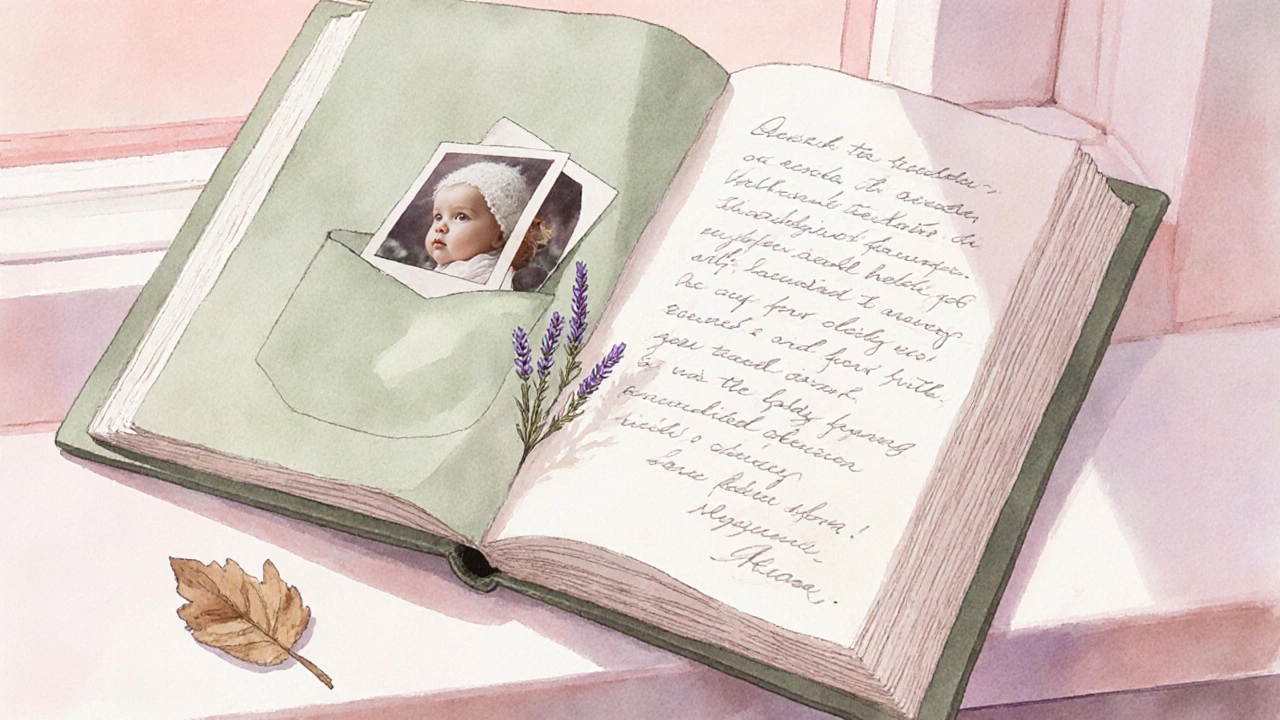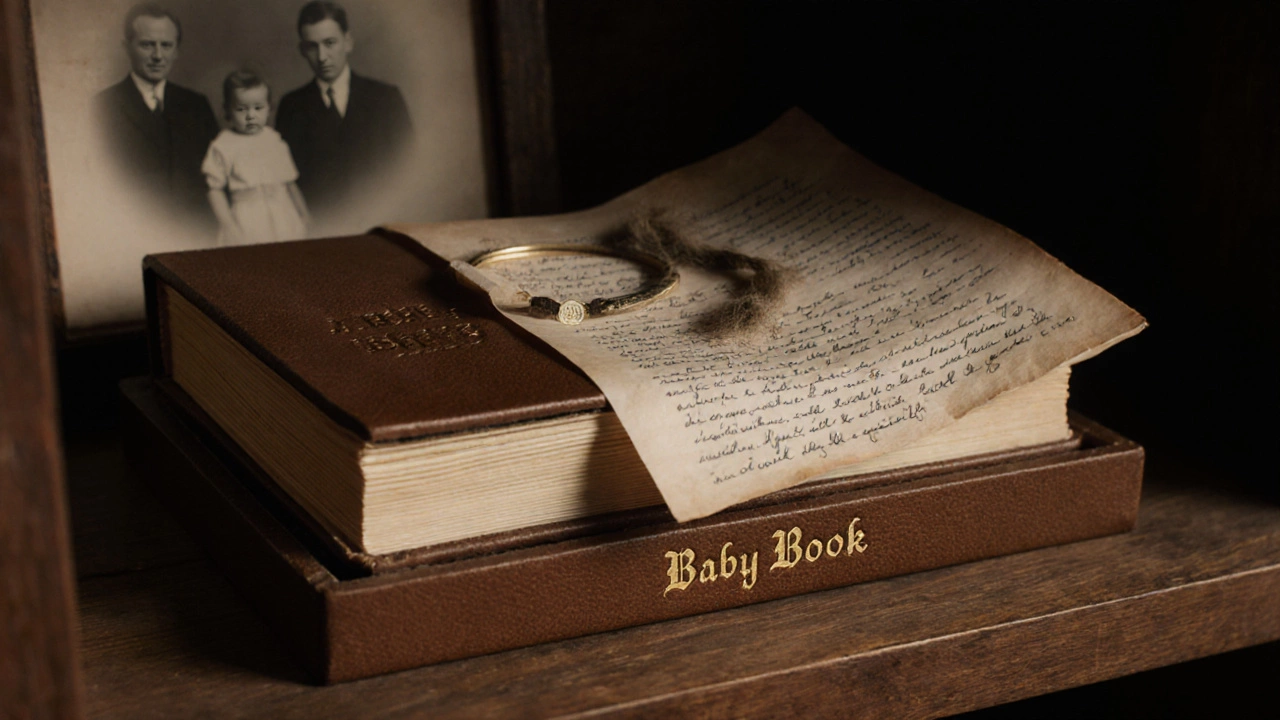Baby Book Message Length Checker
The article recommends 30-80 words (1-2 sentences) for grandparent messages. This tool checks your message length and provides feedback to help you create the perfect entry.
Character count: 0
Word count: 0
Sentence count: 0
When you open a baby book is a keepsake journal where parents record a newborn's first moments, and grandparents often add their own special touches. Grandparents are the family elders who love to share stories, wishes, and advice that span generations. Their contributions turn a simple log into a multi‑generational treasure.
Key Takeaways
- Focus on love, stories, and practical advice rather than long essays.
- Mix short notes with photos, doodles, and small mementos.
- Keep language simple, warm, and age‑appropriate.
- Use both handwritten and digital entries for flexibility.
- Preserve the book in a safe, dry place to become an heirloom.
Why grandparents love to write in a baby book
Grandparents see a baby book as a bridge between the past and the future. They can pass down family traditions-like the story of how they met or a favorite lullaby-while watching a new chapter begin. Studies from the Australian Institute of Family Studies (2023) show that children who grow up with recorded family narratives develop stronger identity and resilience.
What to write: the core themes
Here are the most common ideas grandparents include, grouped by purpose.
- First‑time reflections: "When I held you for the first time, I felt the same flutter I felt with my own baby." This captures the emotional moment.
- Family history: Brief anecdotes about grandparents’ own childhoods, such as "I was born on a farm in New South Wales, and the smell of fresh wheat reminded me of home."
- Wishes and blessings: "May you always find joy in the little things, like a warm cup of tea on a rainy day."
- Practical advice: Simple tips like "Never skip bedtime stories; they build language skills and bond you together."
- Humor: Light‑hearted lines such as "Remember, when you’re a teenager, we’ll still love you even when you hide your socks!"
- Milestone prompts: Space for future entries-"Your first day of school, your first bike ride, your first love letter"-so the family can fill them later.
Each note can be as short as a sentence or a paragraph; the key is sincerity.

Making it personal: handwriting, photos, and keepsakes
Handwritten letters carry the grandparents' unique pen strokes, which children love to see when they’re older. Pair a short note with a faded Polaroid of the newborn, a dried flower from the garden, or a tiny pressed leaf-a miniature scrapbook inside the larger baby book.
If handwriting is difficult, consider a digital app like Tinybeans or LifeCake. Print the screen capture and glue it in, preserving the original feel while still getting the convenience of typed text.
Length, format, and timing
Grandparents don’t need to fill every page in one sitting. A good rule of thumb is 1‑2 sentences per entry, written soon after a major event (birth, first bath, holiday). This keeps the tone fresh and avoids overly formal essays.
Use a consistent format: date, title, note. Example:
2025‑10‑21 - First Birthday "Happy first birthday, Emma! You’ve already taught us how to dance in the kitchen. Keep that spark alive."
This structure makes future reading easy and allows the book to become a quick reference for family gatherings.
Common pitfalls (and how to avoid them)
- Being too generic: Avoid clichés like "Welcome to the world!" Add a detail that only you can share.
- Overloading with length: Long paragraphs can feel like a lecture; keep it bite‑sized.
- Using heavy jargon: Stick to simple language; the child will read this later.
- Neglecting preservation: Store the book in a cool, dry spot away from direct sunlight to prevent fading.

Handwritten vs. Digital entries - a quick comparison
| Aspect | Handwritten | Digital |
|---|---|---|
| Emotional tone | Personal, tactile | Neat, editable |
| Longevity | Can fade, but timeless feel | Requires backup, can be printed |
| Ease of entry | Needs pen, paper | Phone or tablet |
| Inclusion of media | Physical photos, keepsakes | Videos, audio clips |
| Sharing | Physical copy only | Easy to email to family |
Most families blend both: a heartfelt handwritten note for the opening pages, followed by a few printed screenshots of digital messages.
Preserving the baby book as a family heirloom
Once the baby book is complete, treat it like any cherished family heirloom. Use a protective sleeve, label it with the child's full name and birth date, and store it in a zip‑lock bag within a sturdy box. Many grandparents create a “family memory box” that includes the baby book, a lock of hair, and a first tooth-it becomes a story chest for future generations.
Frequently Asked Questions
What length should a grandparent’s entry be?
One to two short sentences work best. Aim for 30‑80 words so the note feels personal without overwhelming the page.
Is it okay to use a digital app for the baby book?
Yes. Many families combine digital entries with printed copies. Choose an app that lets you export PDFs for long‑term storage.
What kind of mementos can I add?
A tiny dried flower, a hospital bracelet, a printed photo, or a handwritten recipe that played at family gatherings are all meaningful additions.
How do I keep the baby book safe long term?
Store it in a cool, dry place, away from direct sunlight. Use a protective sleeve and consider making a digital backup of each page.
Can I write in the baby book after the child is an adult?
Absolutely. Grandparents can add reflections on milestones like graduation, marriage, or the birth of the grandchild’s own children, turning the book into a lifelong chronicle.
